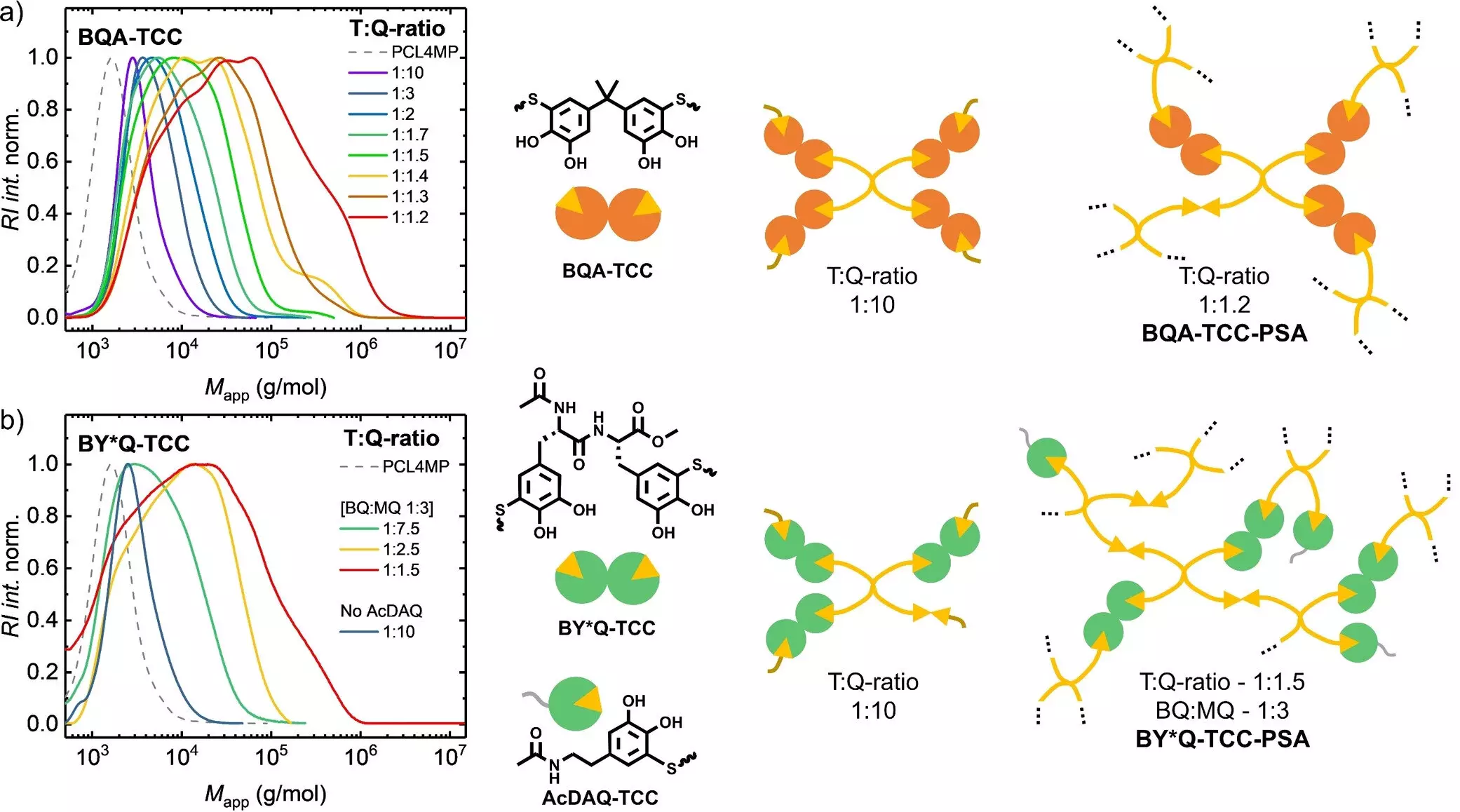In an age of rapid technological advancement and environmental consciousness, the microelectronic industry faces a pressing dilemma. While contemporary devices are becoming increasingly sophisticated, their repairability remains alarmingly inadequate. This manufacturing reality not only contributes to mounting electronic waste but also undermines the principles of sustainability that are essential in today’s world. The emergence of debondable adhesives, innovative materials capable of controlled adhesion and easy release, represents a transformative solution aimed at bridging the gap between microelectronics and a greener planet.
Researchers have long sought inspiration from nature to enhance technology, and one such example lies within the remarkable adhesive properties of mussels. These marine mollusks utilize specialized proteins that allow them to cling to surfaces underwater, presenting a fascinating model for engineering new adhesives. Recent advancements by a multidisciplinary research team have taken cues from this natural phenomenon, resulting in the development of sophisticated adhesives that boast the ability to deactivate on command.
The work, highlighted in the journal Angewandte Chemie, employs a specific reaction known as thiol-catechol polyaddition. This technique produces adhesive polymers characterized by a unique connectivity structure composed of thiol groups and catechol units. Such innovations allow for an unprecedented level of customization in adhesive properties, enhancing the potential for recycling and repairing electronic components.
At the heart of this revolutionary adhesive technology is the oxidation process that converts catechol into quinone. This chemical shift drastically diminishes the adhesive strength, facilitating an effortless detachment of components. The new adhesives are classified into two types: one derived from biobased, peptidic biscatechol precursors and the other from conventional fossil-based materials. Both variants exhibit impressive adhesion and shear strength, empowering them to maintain performance even in challenging environments, including wet conditions.
However, the critical distinction arises in their response to oxidizing agents. The fossil-based adhesive becomes more hydrophobic with oxidation, complicating the detachment process. In contrast, the biobased adhesive demonstrates a remarkable capacity for losing its adhesive properties without significant changes to its hydrophobic nature, primarily due to its diverse peptide functionalities. This nuanced approach reveals the advantages of synthesizing materials inspired by biological systems.
Towards a Circular Economy
The innovation of debondable adhesives underscores the potential for fostering a circular economy. By equipping microelectronic devices with these easily deactivated adhesives, manufacturers can facilitate smarter repair and recycling processes. This paradigm shift not only minimizes waste but also aligns with global sustainability goals.
The research consortium, which includes academic institutions and industry players like Henkel, is also exploring the implementation of direct electrochemical oxidation as an alternative to traditional chemical methods. Such advancements could have broad implications, particularly in the consumer electronics market where routine repairs could become simpler and more sustainable.
Debondable adhesives exemplify a progressive stride towards harmonizing technology with environmental stewardship. By leveraging insights from nature and advancing adhesive chemistry, researchers pave the way for a future wherein microelectronics can be repaired and recycled with ease. As these research outcomes translate into practical applications, the electronics sector stands on the brink of significant change. While still in its nascent stages, this line of innovation holds immense promise, heralding a new era of sustainable practices that could redefine the lifecycle of electronic devices. In a world where sustainability is paramount, the potential of debondable adhesives to mitigate waste and enhance reparability offers a glimmer of hope for an eco-friendly future.

